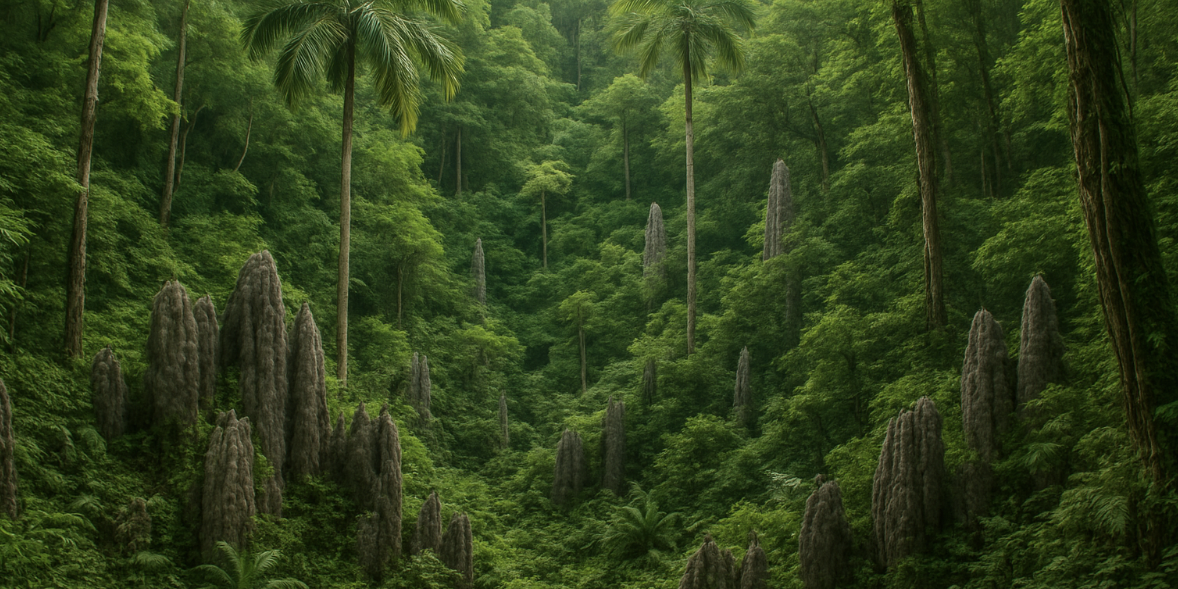Uncovering the Secrets of Jamaica’s Dry Limestone Forests
Jamaica is known for its beaches, music, and Blue Mountains—but few people realize that one of its rarest natural treasures hides in plain sight: the dry limestone forest. Quietly clinging to rocky hillsides and sun-baked plains, these forests are ecological gold mines. They cover roughly 15% of the island yet hold a staggering number of unique species found nowhere else on Earth.
Unlike the lush rainforests that dominate Jamaica’s tourism brochures, dry limestone forests are tough, rugged, and remarkably resilient. They thrive in thin soils, low rainfall, and blazing sun. The secret lies in the limestone—porous rock that drains water quickly, creating dry conditions that only specially adapted plants and animals can survive.
What Makes These Forests Special?
Jamaica’s dry limestone forests are biodiversity hotspots. Of the more than 3,000 species of plants found across the island, nearly 30% are endemic—meaning they grow nowhere else. And a large number of those live in the dry limestone forests.
Take for example the Jamaican Cactus (Melocactus intortus), which stores water in its stem to survive long dry spells. Or the Black-Billed Parrot, found only in Jamaica’s dry forests and now endangered due to habitat loss. The Jamaican Boa, a non-venomous snake, glides silently through these forests, blending into the dappled light. Even orchids and bromeliads, often thought of as rainforest plants, have evolved here to capture moisture from morning dew and fog.
A Fragile Balance
Despite their strength, dry limestone forests are under constant threat. Charcoal burning, illegal logging, farming, and urban sprawl have taken a heavy toll. Because these forests grow slowly and sit on fragile soil, once disturbed, they take decades to recover—if they recover at all.
One of the biggest dangers is that many Jamaicans don’t realize what’s at stake. Unlike rainforests, these areas don’t scream beauty at first glance. But walk into one, and you’ll find a maze of twisted trees, spiny shrubs, and limestone outcrops. It’s a tough beauty—raw, wild, and irreplaceable.
Hidden in Plain Sight
Some of the most important dry limestone forests are located in places most people drive past without a second thought. Areas like Hellshire Hills, Portland Ridge, and parts of St. Elizabeth and Manchester still hold large tracts of relatively undisturbed forest. In Hellshire, scientists have documented species that exist nowhere else on the island. But even that area is shrinking under pressure from development and illegal activities.
There’s also a cultural side to this landscape. The Maroons and other rural communities have long used plants from these forests for food, medicine, and shelter. Some of that traditional knowledge is disappearing—but with renewed interest in herbal medicine and sustainable living, there’s potential to reconnect with these roots.
Why It Matters
Saving the dry limestone forest isn’t just about preserving rare plants or animals. It’s about protecting Jamaica’s identity. These forests are part of what makes the island biologically unique. They support water conservation, help prevent erosion, and provide a buffer against climate change. They even offer untapped potential for eco-tourism, education, and research.
What Can Be Done?
Conservation doesn’t have to mean locking people out. Managed properly, these forests can be both protected and appreciated. Supporting local organizations, encouraging nature-based tourism, and raising awareness—especially in schools and communities near forest areas—can make a difference.
Government action is crucial too. Stronger enforcement, smarter land use policies, and funding for research and restoration are urgently needed. But even small actions—like visiting protected areas, volunteering, or sharing stories—can add up.
Final Thoughts
Jamaica’s dry limestone forests are more than a curiosity—they’re a biological treasure. Unique, underappreciated, and at risk, they deserve a spot in the national conversation. Because once they’re gone, they’re gone for good.
Let’s not wait until it’s too late to uncover—and protect—the secrets of these incredible forests.









